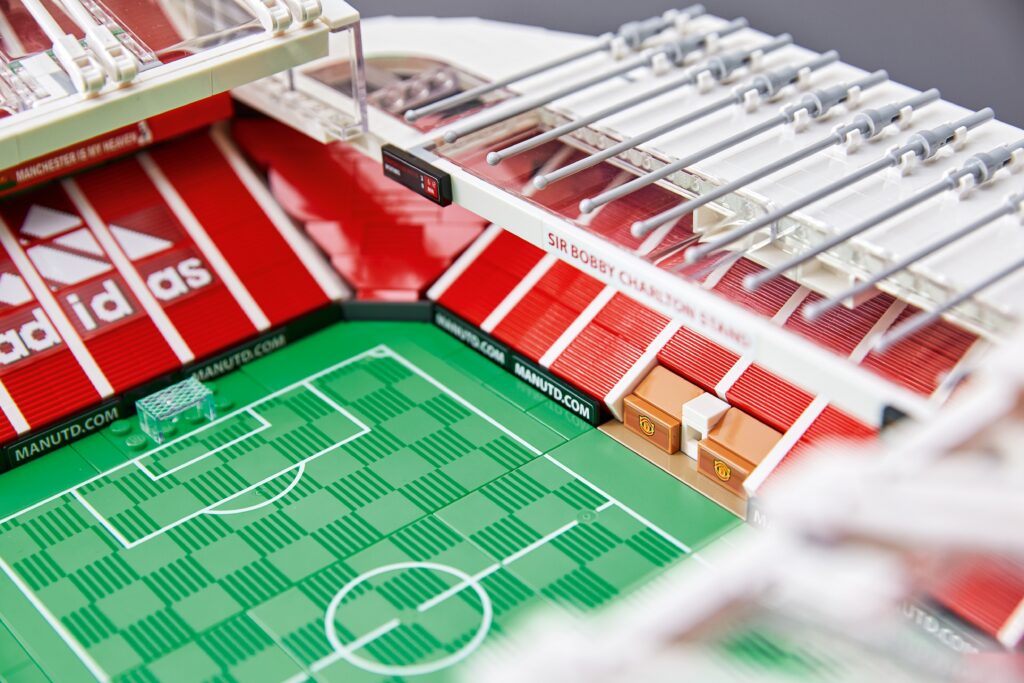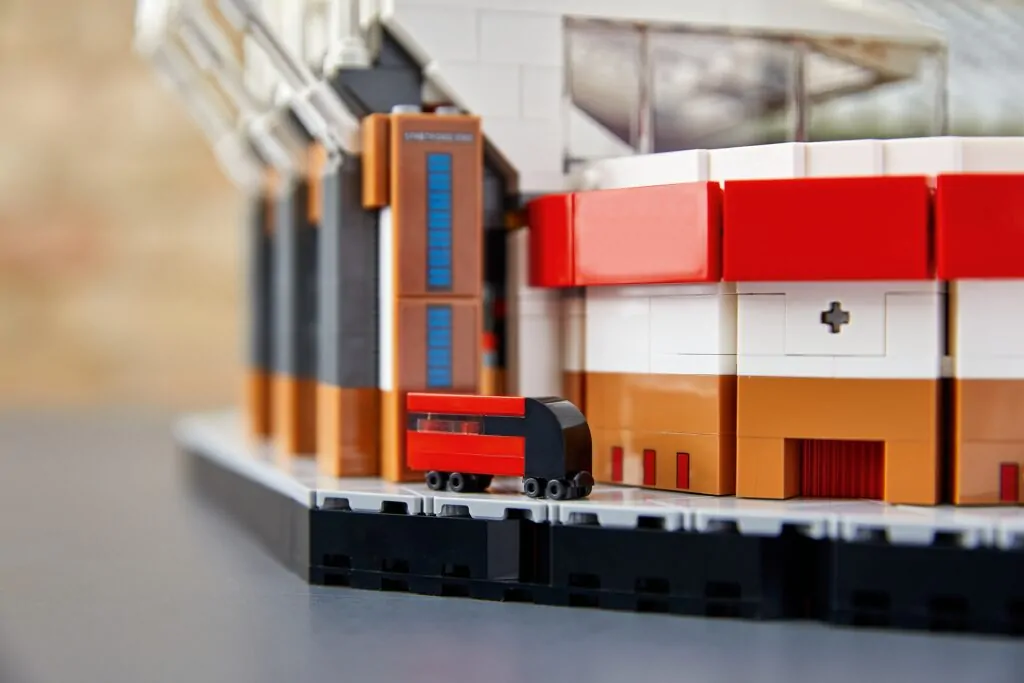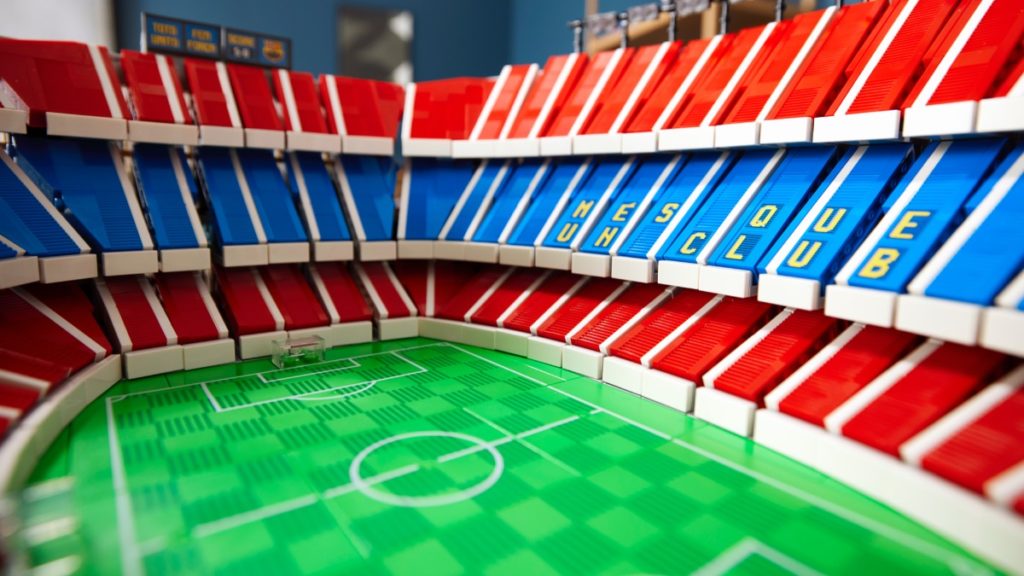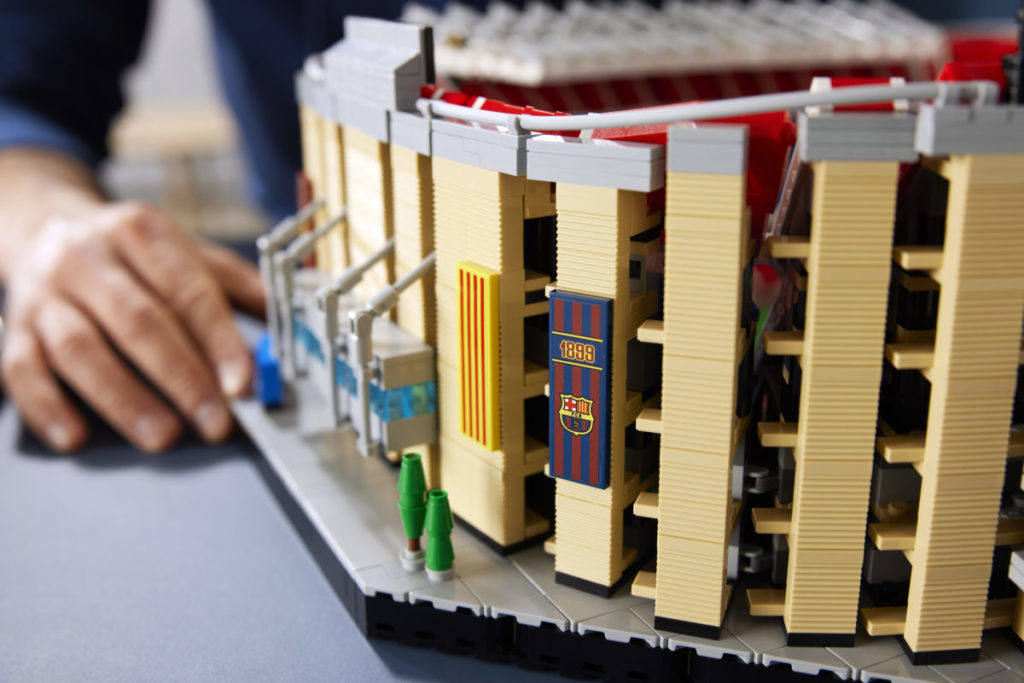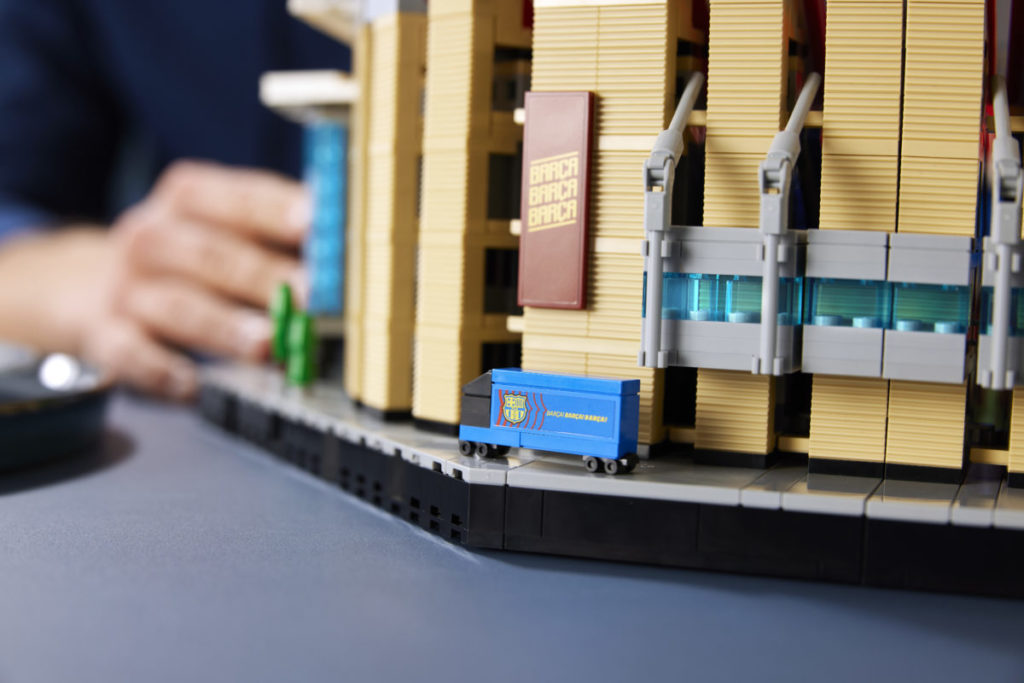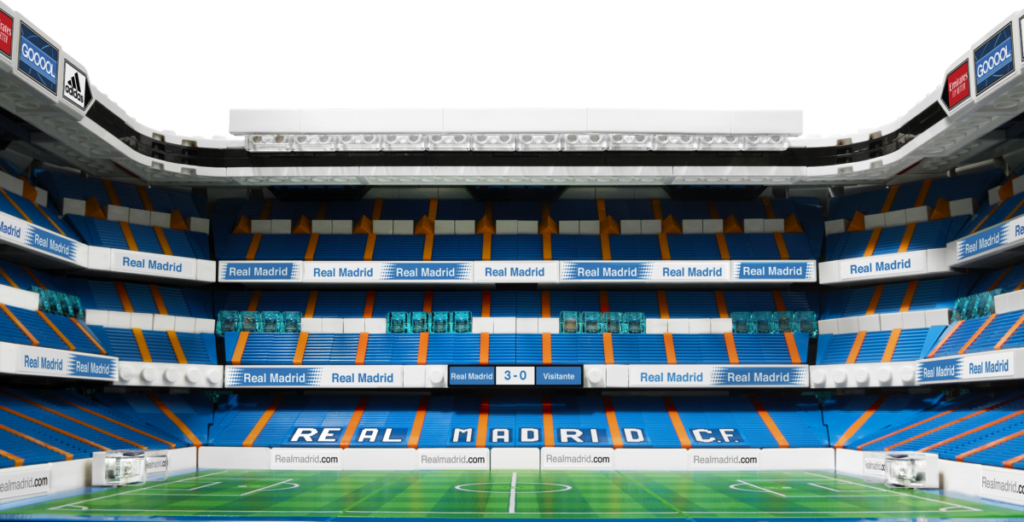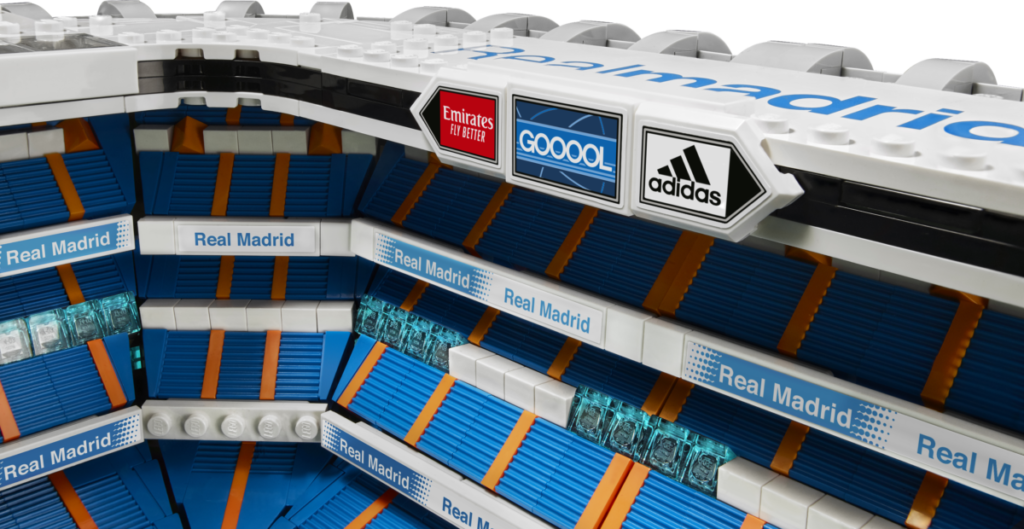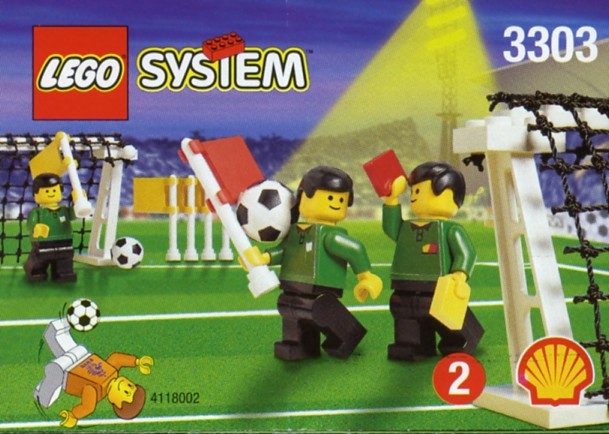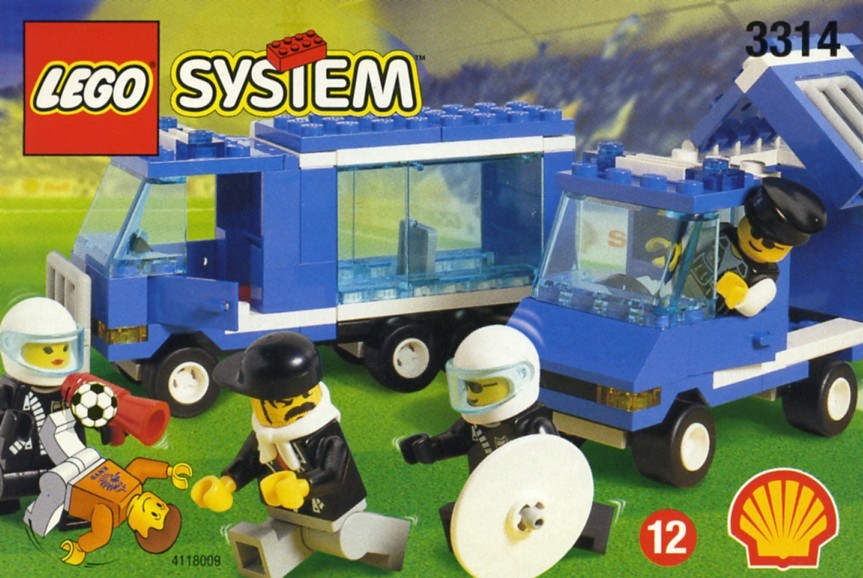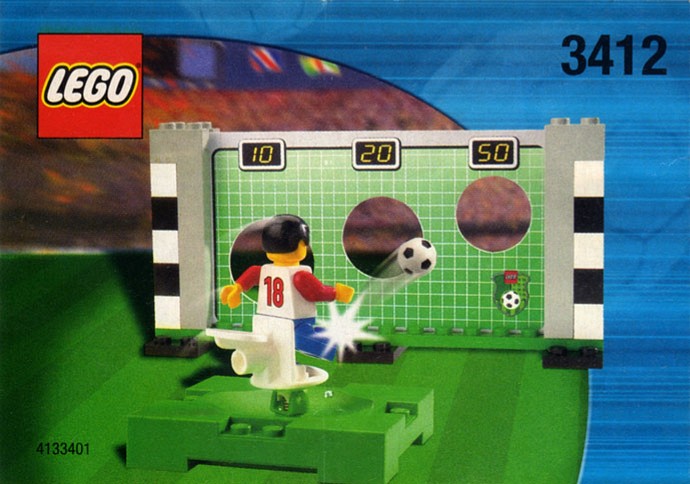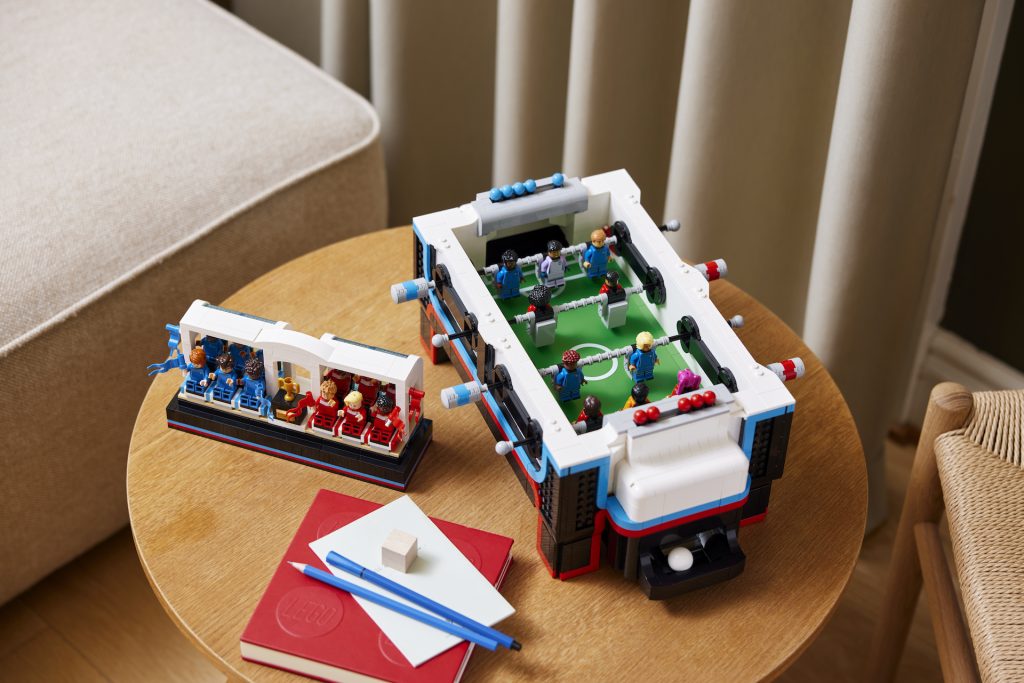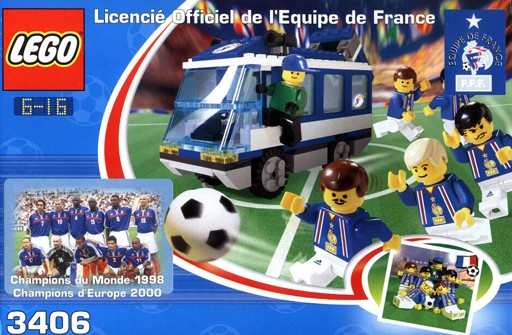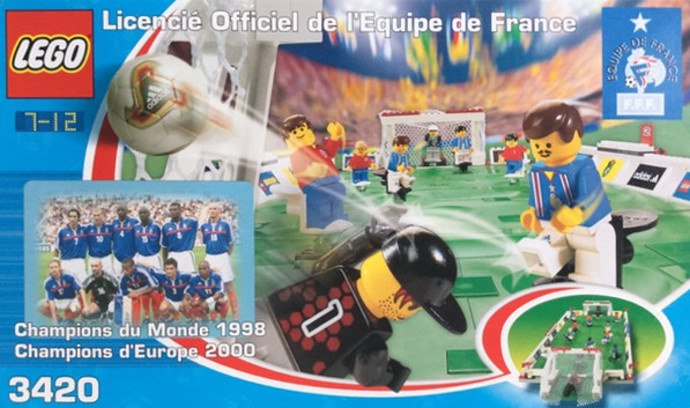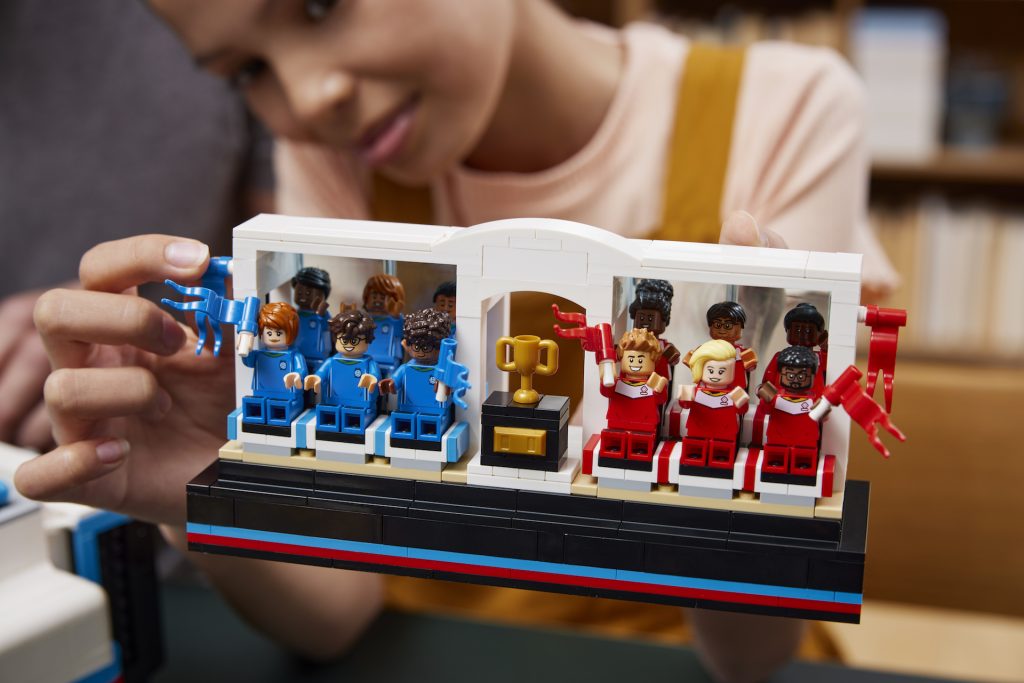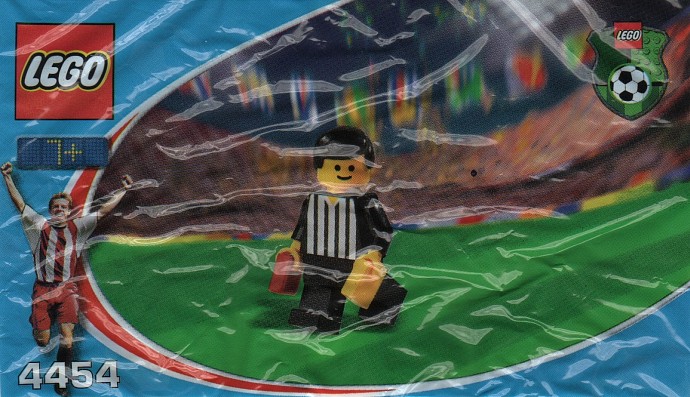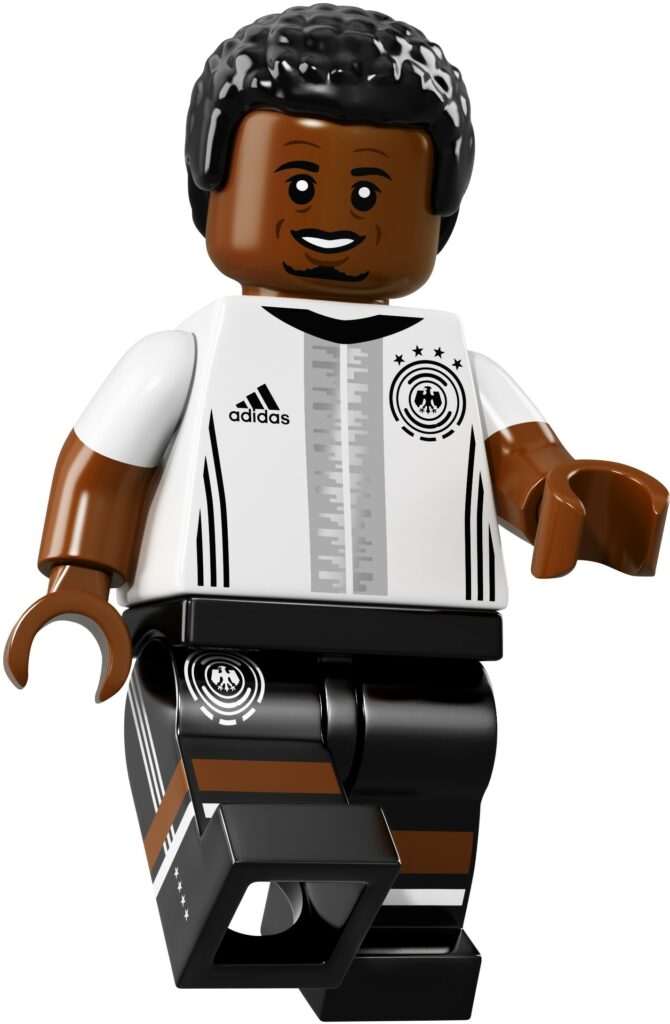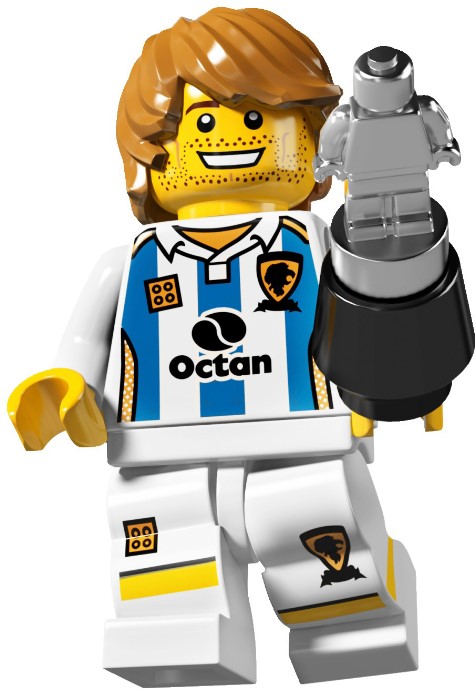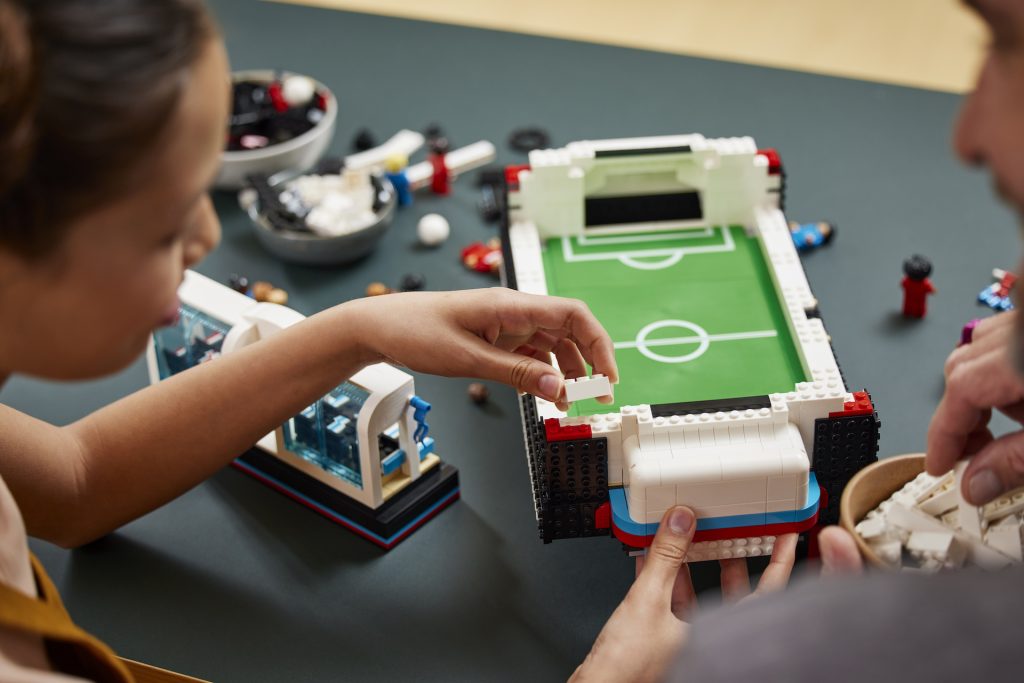
For several years, LEGO and the beautiful game have gone hand in hand. The LEGO Group has released football-inspired sets of all shapes and sizes, from highly interactive, experimental sets to ones targeted at the older LEGO fan. Join us as we delve into LEGO’s long association with football, and the ways in which LEGO football sets have evolved over more than two decades.
LEGO football stadiums
Over the last few years, the LEGO Group has produced a range of football stadium sets targeted at the older LEGO fan. These recreate some of the most popular sporting venues in the world, depicting them at a smaller scale than most LEGO sets. As such, they should function as tasteful display pieces for any football aficionado.
The first LEGO stadium of this kind was 10272 Old Trafford – Manchester United. Named after a part of Greater Manchester, this stadium is the home turf of the Manchester United football team. It first opened in 1910, and is one of the biggest football stadiums in the United Kingdom. Approximately 74,000 fans can occupy the stadium at once, although future modifications to the arena might boost that number.
Over the years, Old Trafford has hosted a number of high profile sporting events. Recent examples include the 1966 World Cup, Euro ’96 and the 2012 Summer Olympics. The stadium has even been used for other sports (including rugby league and rugby union) and functioned as a concert venue for artists like Bon Jovi and Bruce Springsteen.
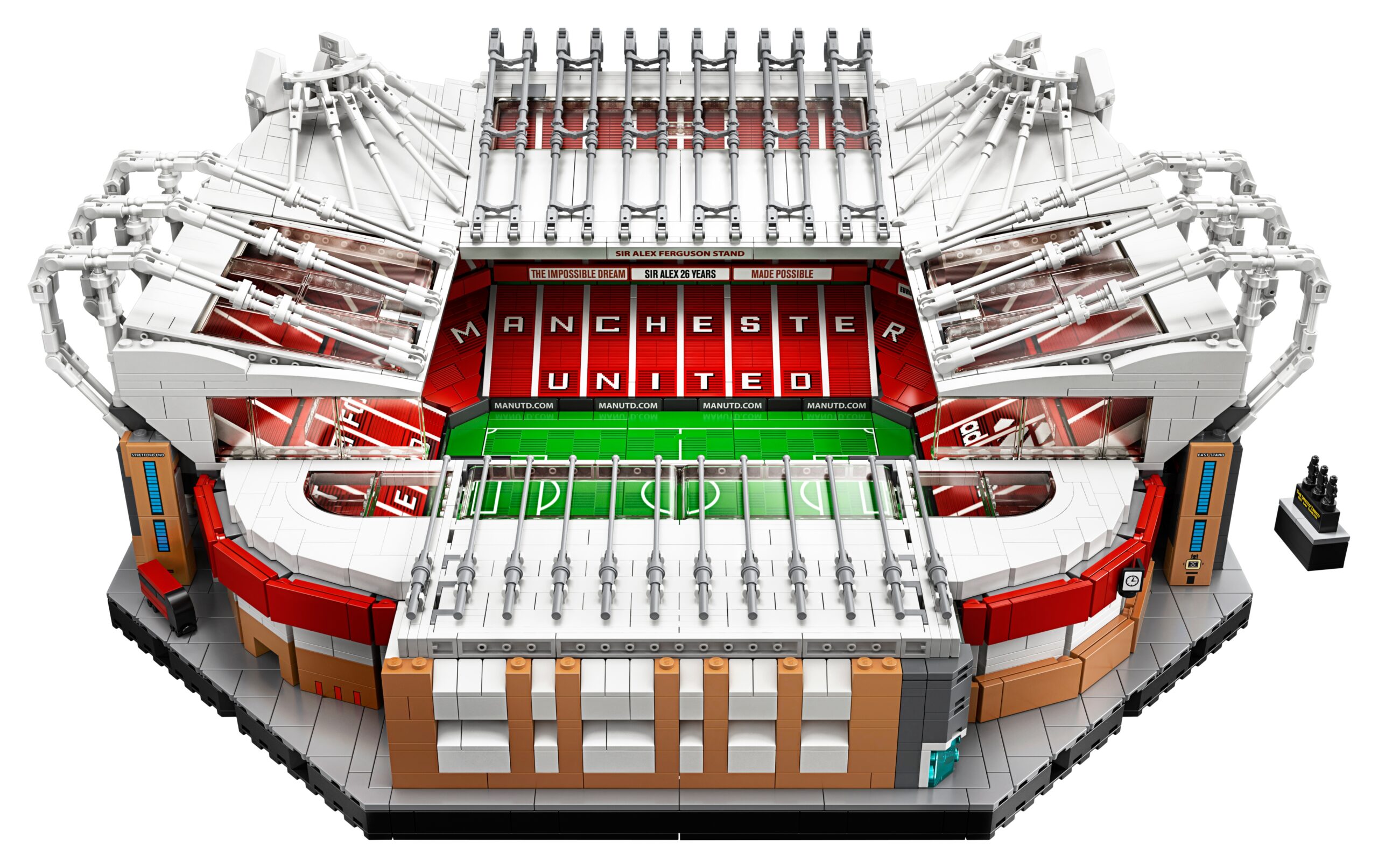
The LEGO Group’s rendition of the stadium naturally focuses on its use as a football venue. LEGO fans build it in sections, with more than 70 stickers and some printed elements bringing it to life. Some of these can be seen on the pitch itself; the goal nets (which use modified tile elements) are especially innovative.
The stands of the stadium use grille bricks, as their subtle texture mimics seating at the right scale. Stickered elements provide realistic branding and sponsorship for the stadium, reflecting its modern-day appearance. Parts of the stadium like the Sir Alex Ferguson Stand are also recreated here, along with the white roof sections.
Exterior features of the set include tiny statues of George Best, Denis Law, Sir Bobby Charlton and Sir Matt Busby. Another important feature is memorials to the Munich air disaster – which took the lives of 23 football players, club staff and journalists in 1958. A tiny team bus can also be seen outside the stadium, injecting a little more humanity into the set.
The other two LEGO football stadiums of this type are each based in Spain. 10284 Camp Nou – Barcelona is the home of FC Barcelona and Europe’s largest stadium. Approximately 100,000 football fans can occupy it at once.
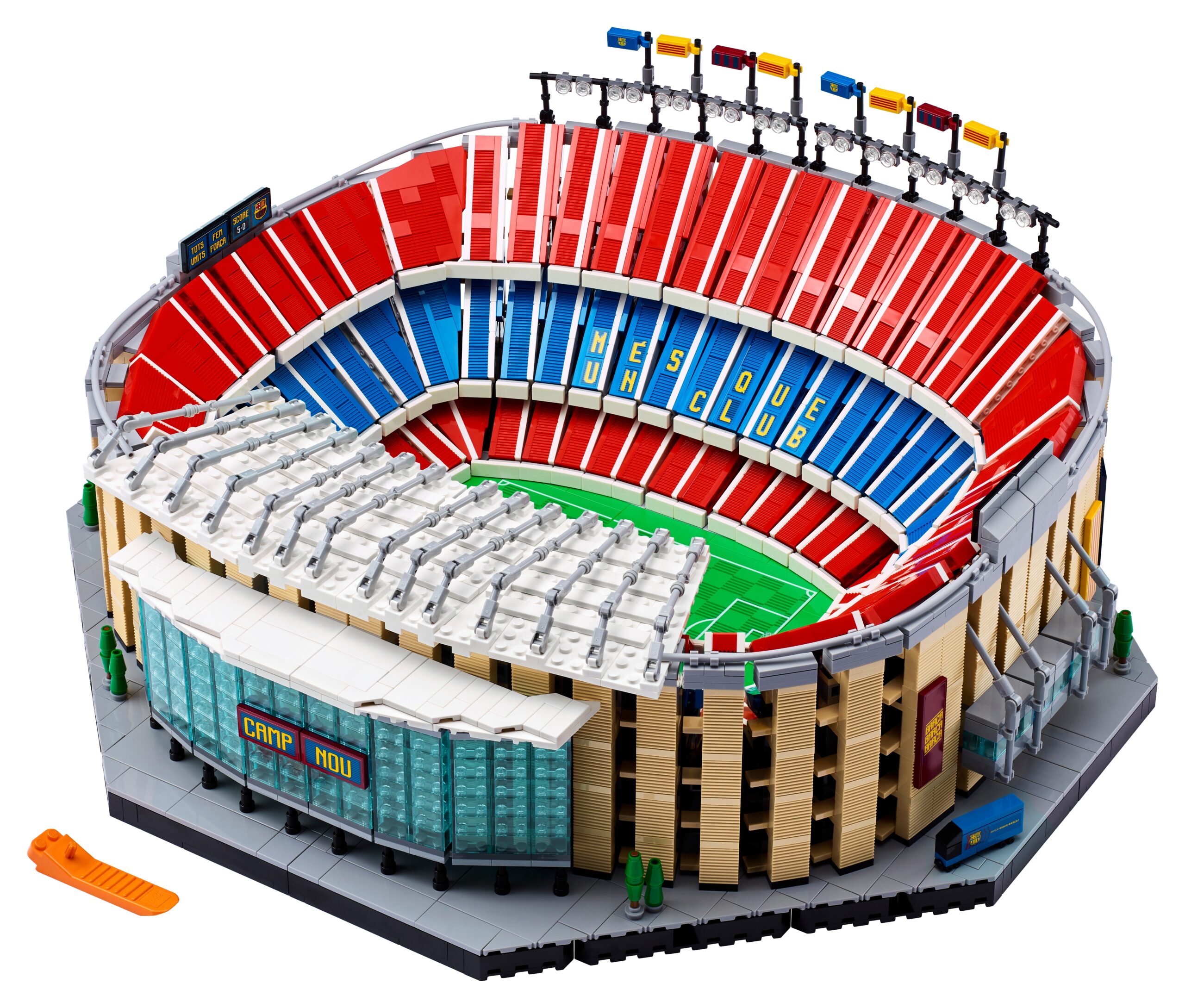
Like Old Trafford, a number of different sporting events have been hosted at this stadium over the years. Examples include the Champions League final, the FIFA World Cup and the UEFA Super Cup, giving football fans plenty to sink their teeth into.
As this set released relatively soon after 10272 Old Trafford – Manchester United, the two share some design characteristics like a modular design and grille bricks to represent seating. It also uses hinge elements to create the subtle curves that a model of this stadium requires.
The set is marked as a Barcelona stadium by several branded and lettered stickers, which are attached to seating, flags and the stadium’s scoreboards. The outside of the stadium is fairly sparse in comparison – offering a few trees, banners and a miniature Barca bus.
The most recently-released LEGO football stadium is 10299 Real Madrid – Santiago Bernabéu Stadium. The home stadium of Real Madrid, it takes its name from former club president Santiago Bernabéu – who worked for 35 years in the role.
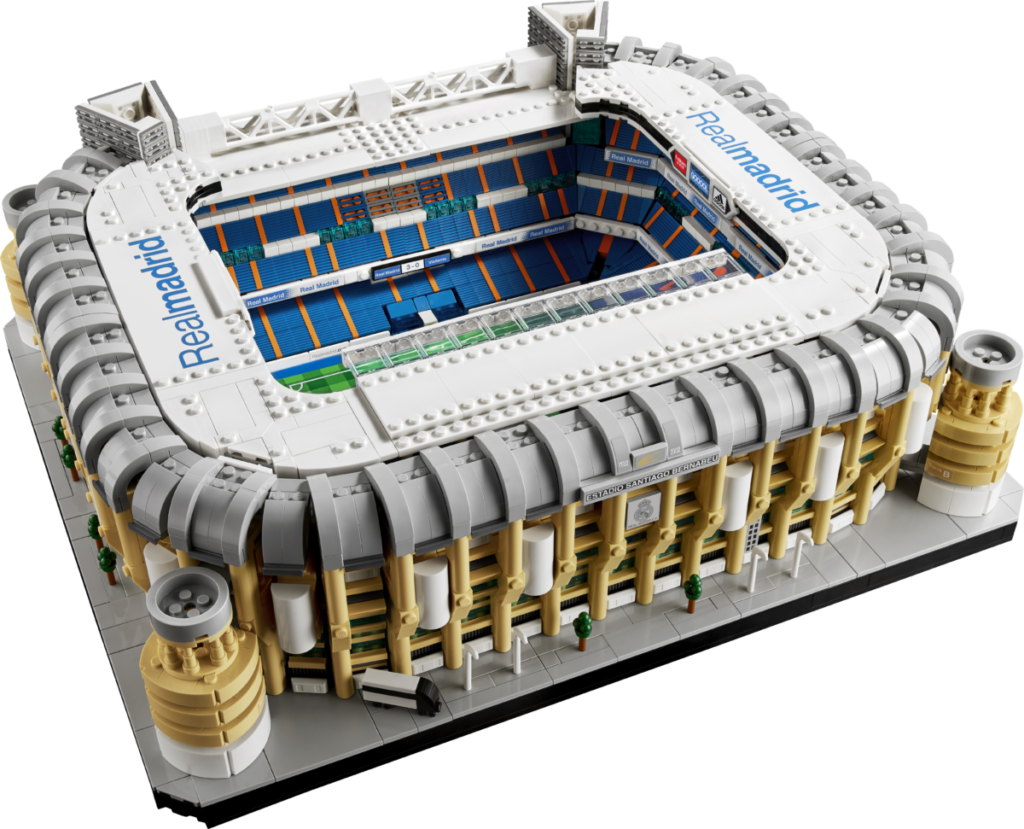
The stadium’s construction was completed in 1947, and can hold up 80,000 football fans simultaneously. Prestigious events like the FIFA World Cup and UEFA Champions League have been hosted at this stadium in the past. However, the stadium is in the process of being extensively redeveloped – meaning the LEGO version will soon be a window on the past rather than the present.
This LEGO stadium stands out thanks to its curving external structure, which uses a mix of beige, white and grey elements in its LEGO version. The outside features the familiar bus, as well as some clever parts usage; hockey sticks are used to depict streetlights, for example.
Inside the stadium is the usual mix of printed pitch elements, corrugated bricks and real-life branding. This one features adverts for Adidas and the Emirates airline, as well as prominent branding for Real Madrid itself.
In short, if you’re a fan of any of these teams, these LEGO stadiums are an offbeat way to show your dedication.
LEGO football sets
While LEGO and football have a surprisingly long history together, the specific form factor of the sets has changed wildly over the decades. The earliest LEGO sets to depict football matches appeared in the Town theme in 1998, with the 1998 World Cup providing inspiration. These appear to have been limited to Europe, leaving American soccer fans wanting.
Even within Europe, though, assembling a decent football scene here may have been frustrating. That’s because elements of the football pitch (such as printed baseplates, stands and even players) appear to have been sold piecemeal. They also used off-the-shelf parts, which meant simulating the gameplay itself would have been awkward.
Still, these first few sets are unusually diverse – with some offbeat subject matter represented here. 3310 Press Box features a booth for football commentary, while 3311 Television Tower allows the action to be broadcast across Legoland. There’s even on-call paramedics (in 3312 Paramedic Unit) while 3314 Police Unit allows you to combat football crowd disorder with a trio of officers.
LEGO and football really took off as a concept in the new millennium, thanks to the LEGO Sports theme. This product range allowed LEGO fans to mimic the playing of sports much more successfully, via a new range of specialised elements. Football sets in the theme benefitted from two key innovations: a smooth baseplate with an indentation and an axle hole, and a spring-loaded piece that a minifigure could be attached to.
By inserting this piece into the baseplate – and connecting multiple baseplates together – LEGO fans could play a proper game of football for the first time. Pulling back the spring-loaded piece and releasing it allows minifigures to ‘kick’ a ball; the shape of the piece includes an indentation for the ball to sit in, helping you to line up your shots more effectively.
Sets like 3409 Championship Challenge demonstrate this idea; you can create a conventional football pitch and enjoy a 6v6 match, or – as encouraged by the instruction manual – split up the components for more innovative pitch designs. This modular design also allowed several smaller sets to make an appearance in the sports theme, such as 3412 Point Shooting, 3422 Shoot ‘n’ Save and 3423 Freekick Frenzy.
While LEGO Sports sets came with the required minifigures, expanding your selection of football players was relatively easy. Several team buses appeared in the Sports theme; each offers a different colour scheme and a complement of six football players, including a goalkeeper.

The minifigures in these sets took an unusual approach to decoration. Each copy of the set comes with a sticker sheet, allowing you to attach various player numbers and flags to both the minifigures and the bus.
The selection of flag stickers is determined by each set’s bus and kit colour. 3403 Black Team Bus, for instance, comes with stickers representing Germany, Austria, Poland, Russia and Czechia. Considering these football sets are otherwise generic, this is a rare real-world reference in LEGO sets of this era.
The buses themselves are also unusually user-friendly. Players sit on a single long plate, which slides into the back of the bus through the rear window. Since the roof isn’t designed to be removed, this is a handy way of getting at the minifigures.

In another nod to real-life sports, some of these buses even came with a full size LEGO-branded football – with one such set, 3426 Adidas Team Transport, offering Adidas-branded stickers for players into the bargain. Minifigure footballs with Adidas branding appeared in sets such as 3421 3 vs. 3 Shootout, drawing inspiration from the 2002 World Cup’s footballs.
Minifigures with generic printed torsos were also available (in sets such as 3425 Grand Championship Cup, for instance). These saved you having to apply stickers to your minifigures, although this particular set does include both generic and Adidas-branded footballs for minifigures to play with.
21337 Table Football is a spiritual successor to the LEGO Sports theme, even if the form factor is a little different. Released in the LEGO Ideas theme in 2022, this set recreates a table football set (also known as a foosball table). It’s a little smaller than most non-LEGO versions, measuring 41cm long and 29cm wide.
Ten minifigures – five on each team – can play at once, with a total of 22 minifigure bodies included in the set. These are heavily customisable; spare minifigure components can be stored in an included spectator stand, which includes both seating and storage space.
LEGO football players
As in real life, LEGO football players have grown increasingly diverse over the years. Early LEGO football players used very generic minifigure designs, which were (inevitably) male. Of course, the plain torsos and genderless faces meant introducing female football players was relatively simple – and an all-female team, 3416 Women’s Team, was also available briefly in the early ‘00s.
That said, there were some real-life football players in LEGO form during this period. 3401 Shoot ‘n’ Score (released in 2000) includes a minifigure of Zinedine Zidane – who, at the time, was one of football’s biggest stars. Winner of the 1998 Ballon d’Or and named FIFA World Player of the Year on three separate occasions, he is even now recognised as one of the world’s greatest football players. As such, his minifigure appearance was a major victory for the LEGO Group.
In addition to a new minifigure face design (which only appeared in a handful of other sets) the LEGO Zidane features significant torso and leg printing – the latter of which was relatively rare at this time. Naturally he also features his name on the back of his torso, making this a highly desirable minifigure even nowadays.
A variant of the generic team bus – 3406 French Team Bus – appeared in the same year that Zidane’s minifigure did. This includes players with similar kit designs to Zidane, allowing you to beef out your French football team a little.
Similar players could be found in a variant of 3420 Championship Challenge II, a set which offered a five-a-side football pitch. However, this set appears to have only been available in France. A variant of 3425 Grand Championship Cup, meanwhile, included American soccer players – complete with white branded kit stickers.
The minifigures included with 21337 Table Football use generic red and blue uniforms. However, they are a big step forward for representation in LEGO sets. Although 22 different players are included in this set, 44 heads – 22 male, 22 female – are available. This means that an all-women’s football match is easily possible, further extending the set’s appeal to LEGO fans.
The set also boasts a wide range of skin tones and facial expressions, helping to make this one of the most – if not the most – diverse LEGO sets ever released. Six different skin tones are available, with some heads returning from previous LEGO sets. Others, however, are brand new – and include a woman with vitiligo. As such, any football fan should find something to appeal to them in this set.
LEGO football boots
LEGO has a presence in real-life football games, thanks to a partnership with Adidas. The latter has produced a wide selection of clothes with LEGO branding, as well as a variety of football boots aimed at the younger LEGO fan.
Three different varieties are currently available, with two designed for turf and one designed for firm ground. However, these are available in multiple styles – some of which preserve the LEGO branding with ‘studded’ surfaces and familiar bright colours. More lurid options are available if you want to really proclaim your LEGO fandom on the pitch.
LEGO football minifigures
LEGO football minifigures have been a little more innovative than you might expect. A range of blind-bagged footballer minifigures were released in Japan in 2002 – presumably inspired by the 2002 FIFA World Cup, as some of the tournament’s matches were being hosted in Japan at the time. These preceded the Collectible Minifigures line by several years, and were rather ahead of the curve as a result.
Football players in this range come with Coca-Cola branding on the front of their torsos, although there are no numbers on the reverse of most of them. Two shirt designs (one red, one white) were distributed across ten minifigures, allowing you to build a pair of respectable football teams.
However, these blind bags also came with other minifigures including a goalkeeper (complete with number 1 on the back), a doctor, a cameraman, a hotdog seller and a referee. While the latter’s printing a is a little simple by today’s standards, he does come with red and yellow cards – making him a fine addition to any LEGO football pitch.
There was even a pair of ‘mystery’ minifigures, which featured players with gold and silver football shirts. These also included numbers on the backs of their torsos, helping to reinforce their exclusive nature.
These minifigures were, in turn, accompanied by a wide variety of handy accessories in separate bags. Examples included spectator seating, TV cameras, stretchers, hotdog trolleys and – naturally – drinks stands and footballs. While building an entire football match from these pieces may have proved laborious, they’re still a great LEGO toy from this era.
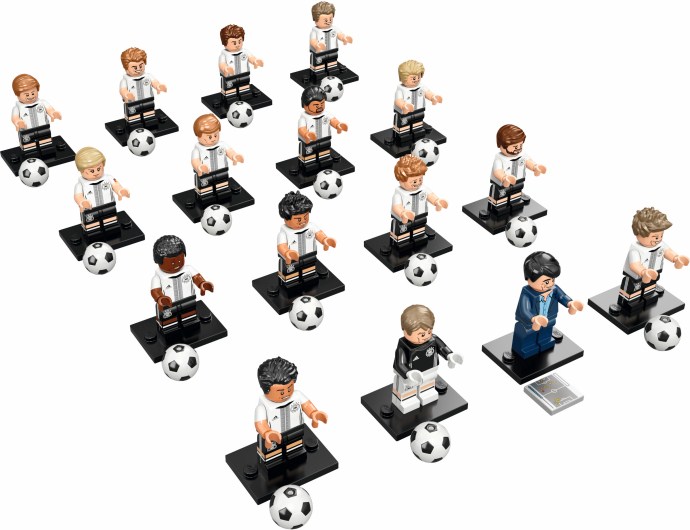
Jumping ahead a few years, the Collectible Minifigures line has played host to a few football players over the years. The most prominent example of this is the DFB series, which launched in 2016.
This blind-bagged product line offered 16 members of the German football team, including their manager Joachim Löw. Each minifigure comes with a football (apart from Löw, who comes with a tile printed with a tactics board).
Even for non-football fans, these minifigures are of particular interest. Each one features extensive printing to ensure that the (licensed) football kits are accurately depicted, and that specific items of clothing like shorts are represented accurately. Like the table football set that would succeed it, these minifigures also boast a variety of hairstyles and skin tones – reflecting the real-life diversity of the German football team.
Outside of this collection, football players have had a slim presence in the Collectible Minifigures theme. The Soccer Player appeared in Series 4 back in 2011, while an American football player followed him in Series 8 a year later. Ironically, both minifigures appeared without a ball to play with.
2021 shook things up by bringing us a new quintet of football fans in minifigure form. 40485 FC Barcelona Celebration appeared as a promotional item on LEGO.com; fans could acquire it by purchasing 10284 Camp Nou – FC Barcelona here for a limited time.
The set depicts a real-life drinking fountain known as the Font de Canaletes. Located on la Rambla (a street in Barcelona) it’s a popular haunt of football fans following FC Barcelona matches. The set depicts the fountain’s four bronze taps, accompanying bowls and lanterns mounted atop it. It also approximates the patterned pavement surrounding the fountain, and surrounds the vignette with the red and blue stripes of FC Barcelona.
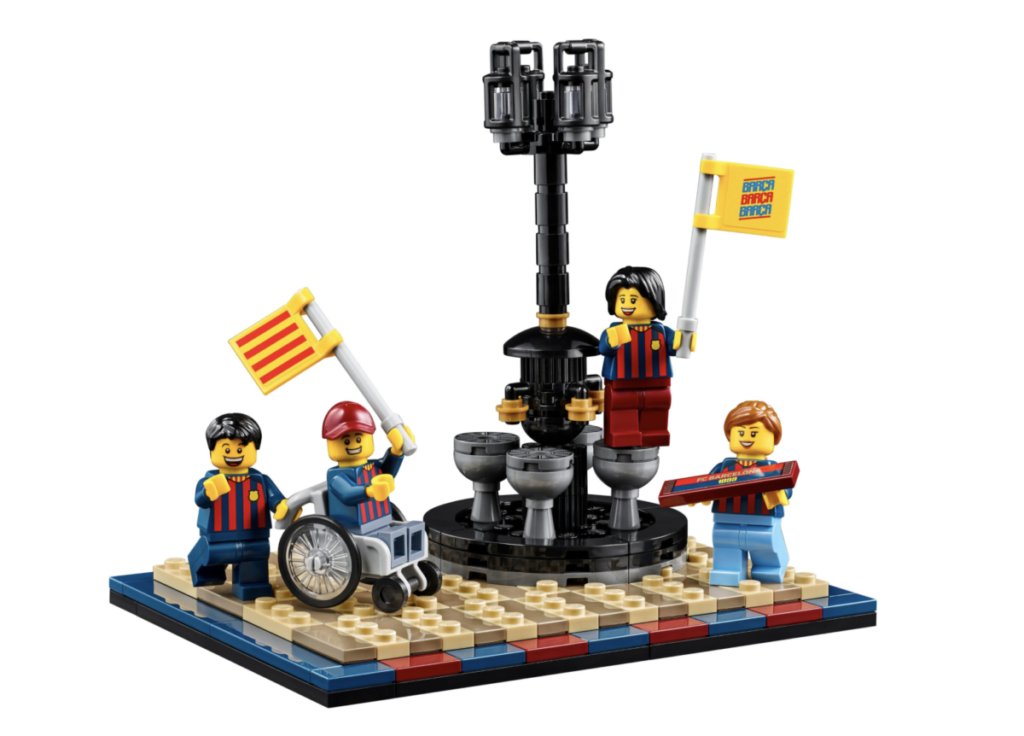
Five minifigures are included with this set; each one wears an FC Barcelona shirt, and different expressions are included to reflect positive or negative match experiences. The minifigures also come with accessories, including flags and an FC Barcelona scarf to further show their football fandom.
In essence, then, LEGO fans have been able to explore football from a variety of directions. While we aren’t yet sure what the future holds, we suspect the LEGO Group and football will remain partners for a while to come.


